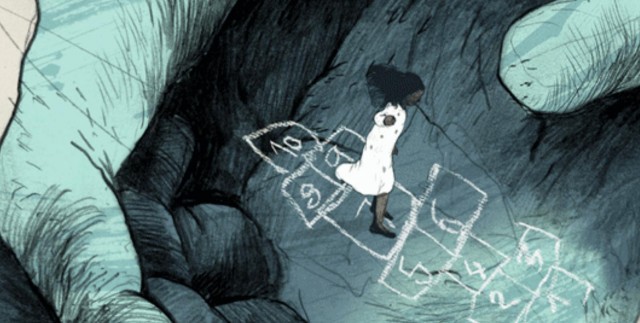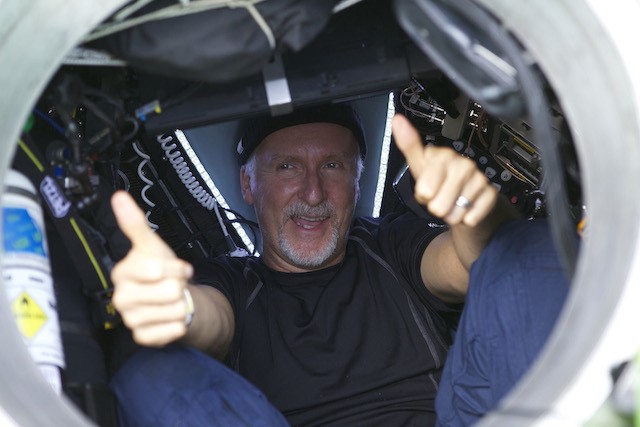The Pedophiles Who Didn't Want to Hurt Children

Today, Luke Malone published a story on Matter, a publication of Medium, with the headline “You’re 16. You’re a Pedophile. You Don’t Want to Hurt Anyone. What Do You Do Now?” Fortunately, that “you” in that headline is probably not you, although it could be, and is also not Luke the writer; it’s a story about a group of young pedophiles who’ve come together to prevent themselves from offending and from using child pornography. It considers the apparently radical idea of treating potential sex offenders before they hurt people — treating pedophilia as both a public and mental health crisis, where we’ve previously only addressed it as a criminal justice topic. This will upset some people. I talked to Luke about the making of this story.
Choire Sicha: I think it’s fair to mention that this story began its life as your Columbia journalism school thesis. So, like any reporter, you were on the hunt for a meaty or captivating story, and somehow you thought… I KNOW, LET’S GET TO KNOW SOME PEDOPHILES, SOUNDS GREAT. Is that a fair description of your experience?
Luke Malone: Ha, not quite, there were a few steps before I got to that stage. Knowing how rare it is to get the opportunity to work on one single story for the better half of a year, I wanted to try something ambitious. I was looking high and low for story ideas, and had a few things bubbling away. One day I was reading about the Jerry Sandusky trial; he had just been charged. The comments at the bottom of the article were all so vitriolic. I mean, that’s to be expected, but people were really going to town. It reminded me that pedophiles are the most hated group in all of society. It got me thinking about how all this starts; when do you first develop feelings towards little kids and do all pedophiles want to act on it? I started looking around and found that an attraction towards kids usually develops in the early teens, and there are a large portion — perhaps the majority — that don’t want to act on it. It seems obvious to me now, but I had never really thought about it before.
Choire: Vitriol in comments? I’m stunned. Do go on.
Luke: I thought how harrowing and confusing it must be to be, say, 13 and realize you’re attracted to children. Well, much younger children. With no frame of reference, no one to turn to. As a gay guy, I can relate in some small way to that confusion and dread. There was no It Gets Better when I was coming up. I started looking around to see if there was anywhere that these guys, and sometimes young women, could get help or therapy to deal with this massive thing. And there’s nothing. Zilch. There are even laws in place that make it tricky to see a regular therapist. I eventually found out that Professor Elizabeth Letourneau, who works out of Johns Hopkins Bloomberg School of Health, was in the early stages of launching The Moore Center for the Prevention of Child Sexual Abuse and I was like, ‘Yes! Here’s my story.’ I approached my thesis advisor, Gerry Marzorati over at The New York Times — who was great, by the way — and he was like, well, this is a 1,500–2,000 word story at best. It’s not going to carry a 10,000 word narrative. I was bummed, but he was completely right. It was then that I said to myself, well, let’s get to know some pedophiles. Some young ones who have not and do not want to act on their desires.
Choire: I’m glad to know you did actually did say Let’s Get To Know Some Pedophiles.
Luke: Well, maybe not out loud.
Choire: Fair! And you did find them. Here’s a minor question: in your search for pedophiles, did you run into any anxieties about Internet searching? Like you were going down some rabbit holes and in America (and some other places), the things we can look at online can be legally dangerous.
Luke: My God, yes! To this day, I’m certain I’m on several watch lists.
Choire: Oh neat.
Luke: I had to do my research and figure out where, as a journalist, I’m allowed to go and what is completely off limits. Anywhere that there is child porn is a no brainer. But I ended up talking to a lot of teenage pedophiles, and we had to be really careful about where those conversations went. Discussing sex with minors is a no-go, so it was tricky to cover the ground I needed to. But I figured it out. Going forward, any other story will be a piece of cake.
Choire: Oh right. Not only could you see things that are Not Okay, you could have conversations that essentially cast *you* as a pedophile or a pedophile recruiter. Yikes! So, eventually you made contact with some folks. Were you more anxious about the first contact, or about your first face to face meeting? (I realize I am projecting here, because *I* get anxious about these things. Maybe you didn’t!)
Luke: More about getting to the stage where a face-to-face meeting was possible. These guys, though they desperately want help and someone to talk to, were understandably skittish at first. I had to talk to them online for months, gaining their trust and convincing them that I wasn’t there to out them or hurt them in any way. This involved chatting to them for hours almost every day, literally hours, and then progressing to phone calls and then arranging for me to fly out and meet them in person. We all already knew each other so well, and I was so antsy to get face-to-face interviews in the bag that I was champing at the bit to meet them in person. Which isn’t to say it wasn’t weird and awkward at first: “Hello stranger, let’s sit in your car or in a park or cafe and chat about your deepest darkest secrets for the next five days. Let’s roll!”
Choire: Wow. It’s like the opposite of Internet hookups. Err, sorry. I make jokes about things that make me uncomfortable! ANYWAY. Who were the first people, besides at Columbia, who you told about this? And how did they take it?
Luke: This one is a doozy. People would eventually find out what I was working on, and the questions would come thick and fast: How did you find them? How can you stomach it? Why are you defending pedophiles? It was really telling about a person if they asked that last one. I get it, pedophiles get a bad rap and in many cases rightly so. But I found myself trying to convince people that there are plenty who don’t want to act and really want help not acting on their attractions. Which, side bar, would be a big ask of anyone. Imagine if you were told at 16 that you could never have sex in a way that was appealing to you, Okay, thanks, bye! There’s obviously a reason for that, but it makes no sense not to help them out. Anyway, most of my friends got it but a few were like, “Okay, but at the end of the day you have to put the kids first.” I would reply that talk of preventive therapy was putting both teenage pedophiles, who are essentially kids themselves by the way, and their potential victims first. It’s win win. But they’d think about it for a minute and reply, “Yeah, I get it, but we have to put the children first.” It was all very Helen Lovejoy.
Choire: Haha “pedophiles get a bad rap.” Yeah… that’s… crazy.
Luke: I was telling a friend about it over dinner at a bar one night and the bartender overheard. He was into the discussion at first but then turned on me and we ended up having this big argument. After bickering quite loudly for five or ten minutes until I was like, shut up and let me eat my food. And please don’t spit in my vodka soda. Then there was the Columbia professor — I need to point out that this was not a J-School professor, the J-School were really supportive of what I was trying to do — who I went to ask for some advice. He was a total asshole about it. All but accusing me of supporting pedophilia and suggesting that it’d ruin my career. He then filed a complaint with the J-School, suggesting that they stop me from doing it. Luckily, they looked into what I was doing, gave me the thumbs up and sent me on my way. You can never underestimate how worked up people can get about this. Some people for very good reason, others just get pulled into the hysteria that surrounds it.
Choire: WOW. I can’t believe someone tried to bust you at your own school. I mean, I can, I guess. One thing you talk about is that America has a really tangled history of conflict of public health and criminal justice. We see this in drugs, in HIV prevention, and in psychiatric treatment as well, including for people who do not want to be sexual offenders. (I mean it always cracks me up that suicide has historically been illegal.) You’re Australian. Do you think being a foreigner here impacted the way you thought about this stuff in the U.S.?
Luke: In my opinion, many countries around the world don’t handle therapeutic intervention for pedophiles very well. What makes this particularly notable in the U.S. is that you have this decentralized state system that makes a lot of things, including psychiatric treatment and criminal justice, such a slow road when it really doesn’t need to be. It made my research particularly challenging in that I couldn’t just read up on a handful of laws, I had to see how these laws played out in every state. I can only begin to imagine the nightmare this creates for policymakers.
Choire: Yeah, we are crazy with our state laws and our county laws and our city laws and it’s total mayhem. America is great and hilarious.
Luke: Such a beautiful and advanced and, in many ways, completely backwards country.
Choire: Oh yes, we’re magical. On a more wonky journalistic note, did you and your editor at Medium, Mark Lotto, ever consider a warning to readers at the top of the story? Something perhaps like a trigger warning? I mean presumably it’ll be evident from the headline, but the story does contain a HORRIFICALLY GRAPHIC DESCRIPTION OF SOMETHING HORRIFIC that made me want to throw the computer across the room and also made this piece nearly impossible for editors to even look at.
Luke: Ah, the good ol’ trigger warning debate. I feel like out of all the questions you ask, this will get me in the most hot water. Mark and I are yet to have this discussion, and I don’t feel thaaaat strongly about it one way or the other so I’m happy to defer to him. But, at the same time, I think trigger warnings have a tendency to be overused. It’s all so subjective, but sometimes they are applied to material that may not necessarily be triggering, it just wades into territory that makes people uncomfortable — and that’s not the same thing. I also feel that trigger warnings are often condescending. If you have a headline that reads “Child rapist abused 40 victims,” should that get a trigger warning? I mean, if you can’t figure it out from the title alone…. There’s a little too much hand holding when it comes to this area. Though, having said all that, if there ever were a story that deserved some kind of heads-up it is this one. That scene is as rough as it gets.
Choire: I find this story quite disturbing and I think it’s (of course!) okay if people have to set it aside or avoid it. Not that they need my permission or approval! But you know. That’s a good choice for some people! On another level, I think it’s really important for people to know that not only do these guys exist, both in the good and bad of them, but also that this child pornography exists. For people like me, who’ve never seen child pornography, it’s very ephemeral as an idea. Like I assume there’s probably some stuff out there, but when you listen to these guys, who are accustomed to searching it out, it’s LITERALLY ALL OVER THE INTERNET AND IT’S WORSE AND MORE GRAPHIC THAN YOU MIGHT THINK AND OH MY GOD THAT’S AWFUL. I realize that wasn’t really a question.
Luke: I can answer to it. I agree that this story isn’t for everyone. And that’s fine. No one is under any obligation to learn more about how pedophilia develops and is managed by this group of well-meaning guys, and I’m referring solely to the people in the piece here. Though if it’s an area that you feel strongly about one way or the other — which, to be fair, is most of us — then I’d recommend it. The story of the young, non-offending pedophile is one that hasn’t been told before and if you want to talk seriously about preventing child sexual abuse then bringing them into the conversation is vital. They’re not boogiemonsters, they are kids who want to have sex with younger kids. It’s a sad reality, but they are going to grow up to be men who are attracted to little kids. It seems insane to me that they are brave enough to put up their hands and ask for help but we, as a society, essentially tell them, “Nope, no therapy for you! Go away and rape a child and then you will enter the criminal justice system and then we can deal with it.” By then the damage is done. We need to start intervening before abuse occurs, for everyone’s sake. Despite the child porn and the ugly truths that this story details, there is a lot of optimism coming through. These are young guys who want help, and there are therapists and researchers who want to help, they just need policy and funding that allows it. In fact, a radio version of this story appeared on This American Life a few months back and the feedback was overwhelmingly positive. Not only did all these teenage pedophiles contact me asking where they could get help, there were a lot of abuse survivors who reached out and said that while it was hard for them to listen to they were grateful that the topic was being addressed in a way that signaled real change. A much more logical interventionist approach to reducing the incidence of child sex abuse.
Choire: One question about them: how did you prepare them for publication? It’s one thing to finally agree to talk to a reporter, and get to know someone. And now… it’s going on the Internet. Do you think they’re ready to be talked about?
Luke: Man, I hope so. They certainly know it’s coming, I still speak with Adam every week or so. They are nervous, but this issue is clearly very important to them. They know that in order to convince the general public that non-offending pedophiles are out there and deserve our help, someone needs to speak out. I’m not sure if they knew that it would become this big when we first started, but they’re on board. We’ve done everything we can to protect their true identities and I don’t think that will be an issue. It’s more seeing all of these naked truths about yourself out there in the world. Adam and the rest of these guys opened up in the most intimate of ways. They were beyond generous and for that I will be forever grateful. But seeing it out there for all to see? I told them that they’re going to see the best and the worst of themselves on display and they will most likely hate it when they first read it. But once the cringing and panic settles down they’ll realize that it’s what I hope is a true representation of their experience. And an important one to share.
Choire: Which leads me to my final question. How legally prepared are you for publication? Like, what happens in the unlikely but presumably possible event that someone decides they want to seize your computer?
Luke: Seize away. I’m confident I didn’t cross any legal or ethical lines during the reporting process. And apart from Adam’s admission of past child porn use — when he was himself only 14 I might add — these guys aren’t doing anything illegal. It’s not against the law to be attracted to kids. It’s against the law to act on that attraction. This is really what this piece all boils down to. These guys don’t want to act on their desires, and they just want help staying on track. Besides, in terms of someone taking my computer, as I mentioned before I’m probably on all sorts of lists. They’re probably reading this right now. Hi guys!
Bel Esprit, "Lose My Mind"
A funny consequence of the way people find new music now is that it’s not always easy to remember where a song came from. The physical circumstances are irrelevant: Were you sitting in a chair in front of your work screen, or standing in line looking at your pleasure screen? Who cares. Did a friend send you a link, and how? Was it on one of your sites? Did an algorithm match you with it? If so, what chain of actions led it to think you might like this song? There are too many of those to replicate; who’s to say where the chain started, anyway? Here is a song that manifested out of the data fog and onto my speakers this weekend, where I let it play all the way through and then played it a few more times. It is both slack and driving and I like it quite a bit. It was matched to my behaviors and now I am matching it to yours.
New York City, August 7, 2014

★★★★★ The air was not so much blowing as loose all around. The river was deep blue under a clear sky, the sun sharp and bright. Misplaced priorities and tactical errors kept the afternoon’s beauty as a thing half-noticed out the windows, till the commuting hour arrived, the perfection of it sharpening the regrets and then immediately putting them away in the drawer. A man stripped off his shirt and changed into a t-shirt as he walked down Lafayette, barely breaking stride. The countdown clock for the uptown 1 was making false claims, and when the train pulled in it was a lobster tank of compacted frustration and resentment. Impossible and not worth it. Time to write off the platform wait as another sunk cost and get up onto Broadway, in the light and air again. A boy played the open-air video game on the wall of the Museum of Biblical Art. People were on benches and outdoor tables and the reflection-bathed plaza of Lincoln Center, making as much of the moment as they could.
This Week in Lines
by Jake Gallagher

6:53 PM Tuesday, August 5th — Free Haim/Sleigh Bells concert sponsored by Levi’s
Location: Brooklyn Bridge Park
Length: Three quarters of a mile
Weather: 72, mostly sunny
Crowd: Two thousand people in various states of wear and tear; two thousand pairs of Levi’s in various states of wear and tear.
Mood: Youth-y, palpably.
Wait Time: Roughly one hour
Lingering Question: How much do jeans fade while standing in a line? How often had they been washed?

11:56 AM Friday, August 1st — Shakespeare in the Park King Lear tickets
Location: Delacorte Theatre
Length: The entire length of one side of the great lawn.
Weather: 81, mostly sunny
Crowd: Bucket-hatted retirees, be-clogged middle aged women, and bicycle-totting thirtysomethings.
Mood: Blank. Most people couldn’t even muster a sigh of relief when the gates finally opened at noon.
Wait Time: Six hours
Lingering Question: Does anyone work on Summer Fridays anymore?

2:06 PM Thursday, August 7th — Starbucks bathroom
Location: The corner of Spring and Crosby
Length: Four people
Weather: 81 and partly cloudy outside; 64 and overcast inside.
Crowd: Spanish-speaking tourists and one defeated looking local.
Mood: Antsy
Wait Time: Five to ten minutes depending on whatever the hell that guy in front of me is doing.
Lingering Question: Can I just pee now?
Jake Gallagher is a writer for A Continuous Lean and other places.
Pickup Artists
by Casey N. Cep
Rock and roll has its Mustangs; easy listening has its Volvos; rap its Beamers, Benzs and Bentleys, but country music has always had its trucks. Big rigs and long-haul truckers got some airtime, but country has always seemed especially enamored with pickups; I grew up hearing Joe Diffe sing that “there’s something women like about a pickup man.”
There’s been a little surge of truck love in the last few years: Lee Brice’s melancholic “I Drive Your Truck,” Luke Bryan’s melodramatic “We Rode in Trucks,” and Tim McGraw’s hillbilly rockish “Truck Yeah” to name a few. Even Taylor Swift has ridden shotgun, having fallen in one of her first singles for “a boy in a Chevy truck that had a tendency of gettin’ stuck on backroads at night.”
One of the classics, “I Love My Truck,” was released by Glen Campbell in 1981. Campbell’s probably best known for “Rhinestone Cowboy,” a song that was nominated for, but didn’t win a Grammy — though it did inspire a feature film starring Sylvester Stallone and Dolly Parton. “I know every crack in these dirty sidewalks of Broadway.” Campbell sings, “where hustle’s the name of the game.” “I Love My Truck” is a simpler pleasure: an uncomplicated ode by a complicated man. He “ain’t got much love,” but he loves his truck, and for two minutes and fifty-eight seconds he tells you exactly why. Who can argue with such a straight-shooting sage? “Well, I just done care when them times get hard, cause I got everything I need right out in my yard.”
https://www.youtube.com/watch?v=770hZ18ZXMQ
“She don’t care what I am,” Campbell says, and “she don’t care what I ain’t.” His truck doesn’t mind if he “don’t work a lick” and “she never leaves home without me.” It’s not only the consolatory logic of a man scorned by human partners, it’s the aggrieved thinking of any teenage boy frustrated by his parents nagging, and the frustrated reasoning of a woman exhausted by the demands and expectations of friendship.
It’s not only men who love their trucks. Men, women, and permit-carrying teens love them, too. We trick them out and dress them up, write catchphrases and memorials on their tailgates, hang testicular paraphernalia from their bumpers and hitches, fly flags in their beds, and mount gun racks on their rear windows. America doesn’t have utes or bakkies, but we’ve got pickups, and we’ve had them ever since Ford modified the bed of the Model T.
“Well, it’ll just get you down if you let life get to you,” Campbell’s ode begins, and the blue-collar philosopher continues: “Cause everybody’s saying something, none of it’s true.” In a world where there’s no truth and times are hard, well, then, what more do you need than a rusted-out, faded pickup?
Casey N. Cep is a writer from the Eastern Shore of Maryland.
A Conversation Between Karl Ove Knausgård and Nic Pizzolatto
A Conversation Between Karl Ove Knausgård and Nic Pizzolatto

The bar is nearly empty. Sun strains through a dirty window. Nic looks over at Karl, and Karl looks ahead.
Nic pushes against the bar, leaning back on the stool and straightening his arms in his t-shirt, which is fitted. “I don’t think you can create effectively toward expectation,” he says.
Karl broods. “What has happened in the last thirty or forty years, I deeply despise. The physical world is gone.”
Nic stands up, and puts his head in his hand. “I’m not in the service business,” he says, rubbing his temples with his thumb and forefinger. He places his other hand on the bar and looks down at it.
“It’s writing, it’s not a real thing,” says Karl. A string of hair falls in front of his brow, which is deeply creased.
“You almost feel like issuing a disclaimer: ‘This show will not change your life,’” says Nic, placing his right hand on the back of his head, his back to Karl. Karl can’t see, but Nic’s eyes are closed.
“It’s the world, out of reach for us, and it is death,” says Karl. Shadows cuts scars into his face. “That was the whole point. Not to try to go somewhere else than this. This is how it is.”
Nic is sitting on the floor now, his elbows resting on his knees, his head resting in his palms. “I always had the rhythms and the language in my head,” he says quietly.
Karl says nothing.
Nic looks up for a second to check on Karl. He quickly puts his head back in his hands. “I always had the rhythms and the language in my head,” he says, less quietly this time. A few seconds pass. Silence. The bar is now completely empty. “Stupid criticism,” he says, standing up with difficulty and purpose. His eyes rise slowly to meet the back of Karl’s head, which is pointed straight forward but is now just inches from the surface of the bar.
“For two years, I worked as a kind of adviser on a team that translated the Bible to Norwegian,” he says, finally. “All good writers have that in common, they do not know how to write.”
“Of course, you’re going to have discussions and difference of opinion, but what matters is that everyone is working without ego toward the best realization of what we have,” says Nic. “As an autodidact pessimist…” he trails off, drops, and does five slow pushups.
“Of course, you’re going to have discussions and difference of opinion, but what matters is that everyone is working without ego toward the best realization of what we have,” Karl says without moving his lips.
Nic has found a mirror. He looks into his own eyes and does not smile. Moments later he averts them, then lets them creep back up to meet themselves. “As a creator, you always have one eye on the back of the room, where you know they’re loading their guns and building your gallows,” he says, lightly punching the reflection of his own fist.
Karl stands, finally, and puts his hand on Nic’s shoulder. “In this matter I am a classic Proustian.”
Nic turns to Karl. He knows he looks wounded, damn wounded. “Rarely have I taken traditional wisdom,” he says.
They embrace briefly, and then part. Nic briefly considers the nature of God and Karl briefly considers the nature of truth. Fleeting eye contact. A mistake; regret. Nic brushes off his chest, and Karl does too.
Deep as Hell with James Cameron
by Brendan O’Connor

The trouble with making a documentary about the deepest, most remote place on the planet, five miles below the surface of the ocean, is that there really isn’t a whole lot happening down there. There are no monsters, no sunken alien warships, just an endless, featureless expanse. But even this is more compelling, in its way, than watching James Cameron get into and out of a tiny metal sphere several times over the course of a ninety-minute film about his seven-year-long journey to get down there, to Challenger Deep, the bottom of the Mariana trench, a place that had only been visited by humanity once before, fifty-two years prior.
On Monday, the American Museum of Natural History held a special screening of the film Deepsea Challenge 3D, which Cameron executive produced. In the film’s introduction, Cameron describes his life-long obsession with the sea, and especially the unexplored ocean floor. “There’s a dark continent down there,” he says in a voiceover. (Hmm.) If Cameron had his druthers, it seems as though he’d be perfectly happy by himself, in a cramped, metal sphere thousands of feet below the surface of the sea, looking at jellyfish. “Am I a filmmaker who does exploration on the side?” he asks the camera at one point. “Or am I an explorer who does filmmaking on the side?” Cameron has, since filming The Abyss twenty-five years ago, pursued a side-career as a deep-sea adventurer, organizing and leading expeditions not only to the RMS Titanic (twice) but also to the German battleship Bismarck and other points of historical and oceanographic interest.
The core team that worked on the Deepsea Challenge — this is the name of the expedition, the name of the submarine is the Deepsea Challenger, and the name of the part of the Mariana trench at which the dive took place is called the Challenger Deep — was initially assembled for Cameron’s second expedition to the Titanic wreck. It’s a large group of people. But we never really learn much about them other than that they are sad when James Cameron is mad.
After yesterday’s “Special Youth Screening,” questions from the audience were moderated by Frederick P. Rose, director of the Hayden planetarium, and famous space scientist Neil deGrasse Tyson. One young man named James asked, “Would you want to go back and bring people with you?” This was an astute question, as so much of the film involves cameras pointing at Cameron while he reacts to things underwater. “Well, I’m not alone when I bring the story back, when I bring the images back,” he said. “That was really important for me so I could bring the story back and share it with everybody here.” Cameron hopes one day to be able to live-stream such expeditions using fiber optics so that whole audiences can travel with him.
The “symbolic value” of the film, Cameron said, is much greater than the actual, scientific accomplishments of the expedition. “It shows us what we don’t know; it shows us what our capability is.” Until recently, there were only two ships in the world that could reach the most remote parts of the ocean. One of them, Deepsea Challenger, is functional, but currently offline. (It was sitting on the curb outside of the museum.) The other imploded in the Kermadec trench. “That’s kind of a ridiculous situation for the U.S. to be in, for human civilization to be in,” Cameron said. “We actually can’t go to an area of the surface of our planet that is the size of North America. We don’t have the equipment to go there.”
These regions include subduction zones, areas where one tectonic plate is pushed under another — a violent process that generates the forces which turn into tsunamis. We know that this is where this process, which causes so much death and destruction, starts, Cameron said, but we don’t have the means to do anything about it: “There’s nothing. There’s nothing that can go down today and place a set of connected instrumentation, which is the only way you’re going to get real-time data on seismic swarms that can give you some chance at generating a predictive model.” (This part of the conversation was where Cameron really hit his stride. He is much more compelling as an advocate for science and exploration than as an on-screen scientist and explorer, more Steve Zissou than Jacques Cousteau.)
“I’m tired of talking to Senate subcommittees about funding and all of the other things we have to do,” Cameron said, gesturing to Tyson. “It’s a waste of time.” He continued, “People believe we’re in a kind of post-exploration age here on earth. They think of the oceans as having been explored, and they haven’t. And they think of space, you know, we’ve been told since the mid-sixties, space is the final frontier. They don’t understand there’s a frontier here on earth.”
Brendan O’Connor is a reporter living off the L train.
Photo of James Cameron emerging from the DEEPSEA CHALLENGER submersible after his successful solo dive to the Mariana Trench by Mark Thiessen/National Geographic.
Let Slip the Tweets of War
Statement from @PentagonPresSec: At approximately 645 AM EDT, US military conducted a targeted airstrike against ISIL terrorists (1/5)
— Marie Harf (@marieharf) August 8, 2014
.@PentagonPresSec: Two F/A-18 aircraft dropped 500-pound laser-guided bombs on a mobile artillery piece near Erbil. (2/5)
— Marie Harf (@marieharf) August 8, 2014
.@PentagonPresSec: ISIL was using this artillery to shell Kurdish forces defending Erbil where U.S. personnel are located. (3/5)
— Marie Harf (@marieharf) August 8, 2014
.@PentagonPresSec: Decision to strike made by US Central Command commander under authorization granted him by the Commander in Chief (4/5)
— Marie Harf (@marieharf) August 8, 2014
.@PentagonPresSec: As President made clear, US mil will…take direct action against ISIL when it threatens our personnel, facilities (5/5)
— Marie Harf (@marieharf) August 8, 2014
“My fellow Americans…” mutters a Deputy State Department spokesperson before clicking post on a series of five tweets announcing new military action in Iraq. I wonder, when are you supposed to turn to your child and give the speech, in this new scenario? Do you give your stoic, “sometimes the country has to make hard decisions, and people get hurt,” talk as you fav or retweet? Do you shake you head and say, “war is never the answer, it only begets more war, never forget this,” as you close the browser tab?
New York City, August 6, 2014

★★★★ After a foreboding moment, blue showed through the gray. It was surprisingly cool early; thin sheets of cloud took the edge off the sun, and little breezes were moving. The sidewalks were well smeared with dog shit, the rain long overdue to make up for accumulated inconsideration. Potted boxwoods awaited planting at the feet of the street trees on Broadway. Down at the river at midday, the coolness persisted. A flight of Canada geese flapped upriver, lower than the elevated roadway, seemingly intent on some distant destination. Then they came back the other way, and back again, less purposeful at every pass. At last they pulled themselves once more into a tidy V, passing so low over the pier that the hiss of air over their feathers was audible. Late in the day, the schoolyard was shaded, despite light flaring off the tops of the buildings. The two-year-old on his scooter nearly mowed down a pair of older children, and was alarmed only by the sight of their alarm. As he lobbied to stay longer, dark clouds came up abruptly, and a sharp wind sent dry leaves scraping eastward over the concrete. A few blowing raindrops helped chase the expedition home for dinner, and then the disturbance was over entirely.
